What Makes a Good Swimming Facility For Athletes?
Whether you’re a swimmer or diver, the facility can be a game changer. Here’s how the University of Texas TSC is built for the athletes.
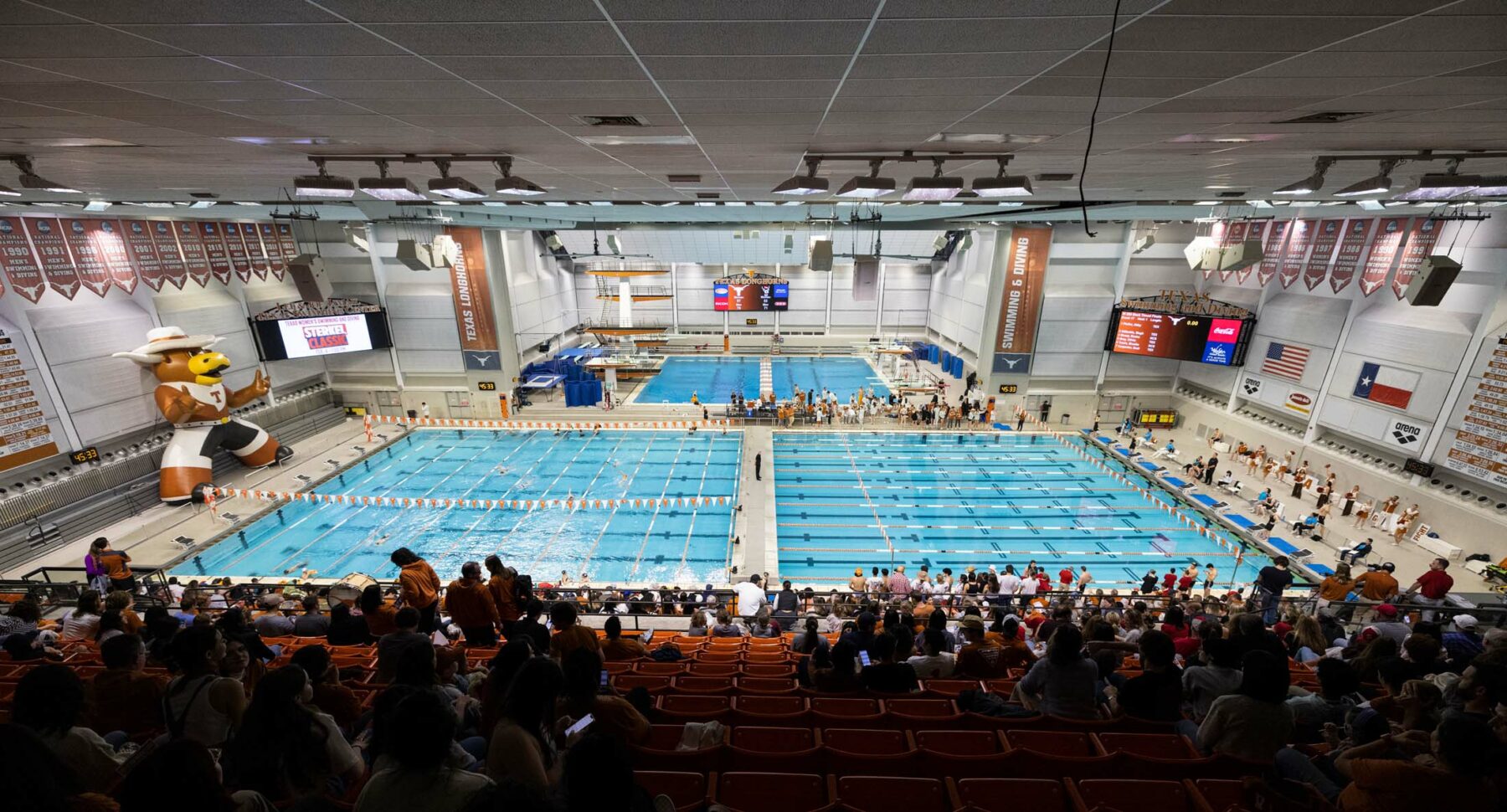
What came first: the pool or the swimmer? The two go hand in hand when it comes to performance.
Swimming facilities can make all the difference in a swimmer or diver’s experience and performance, and there are specific qualities that athletes look for. At the University of Texas, the Lee and Joe Jamil Texas Swimming Center (TSC) serves as a local poster child for effective pools.
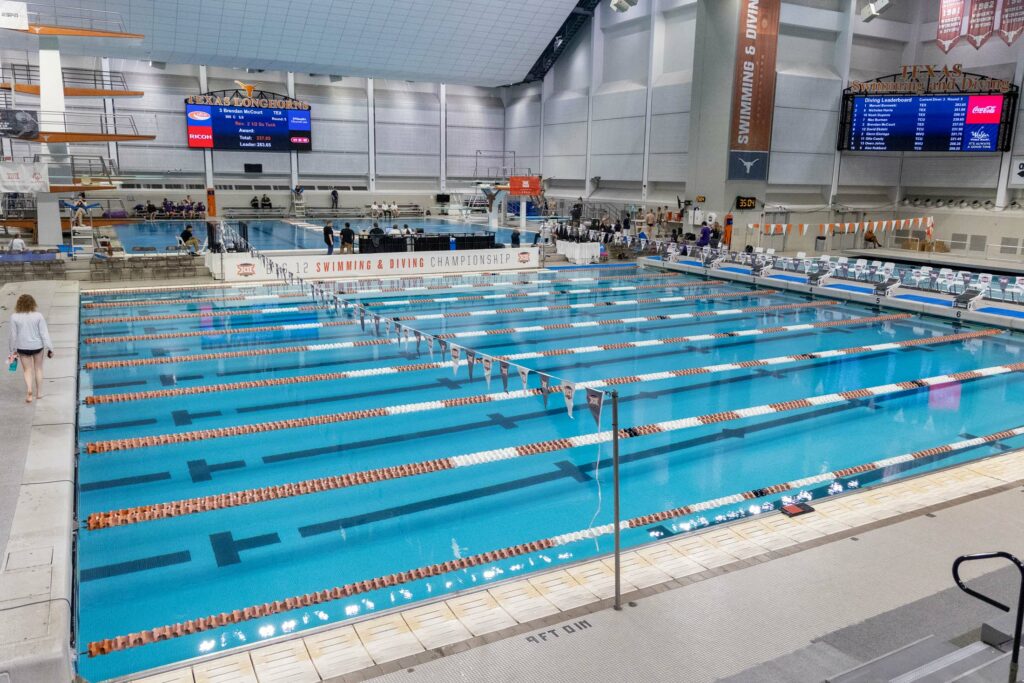

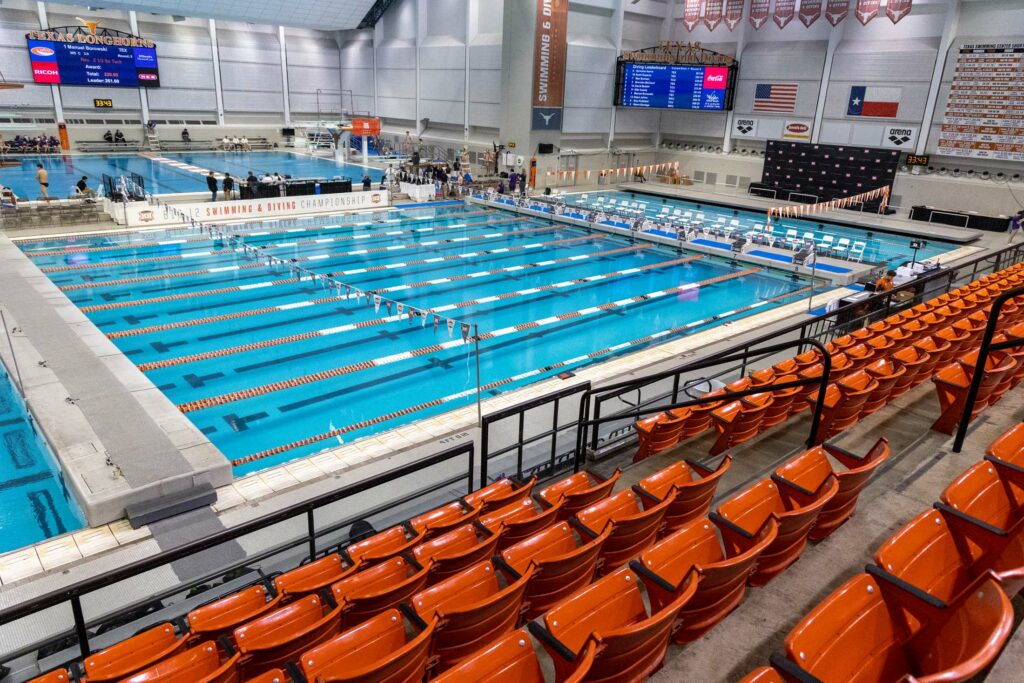
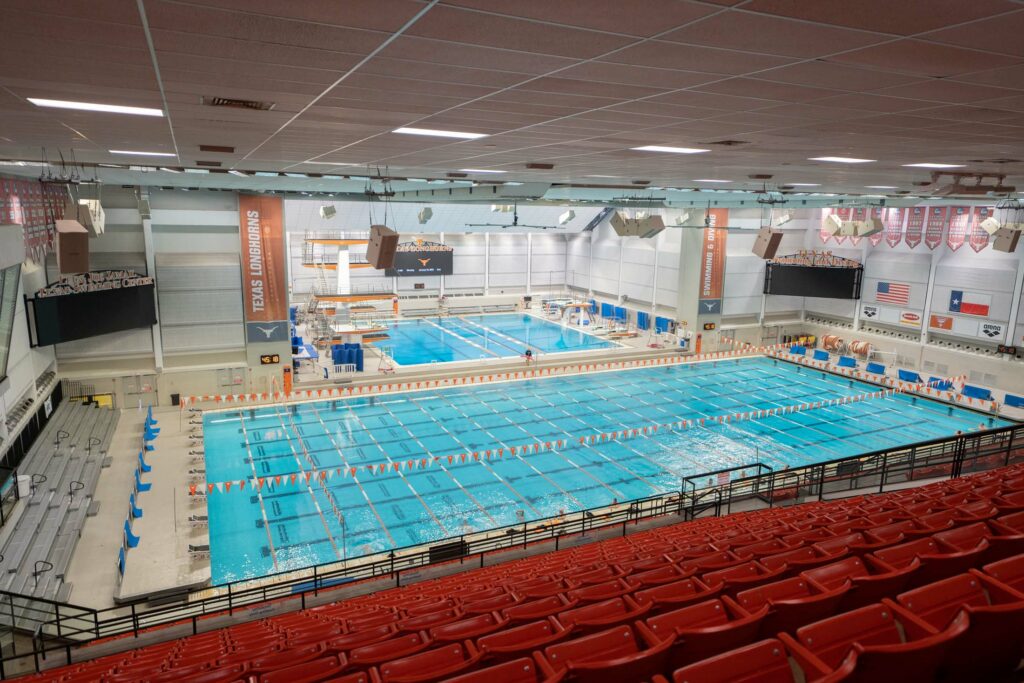
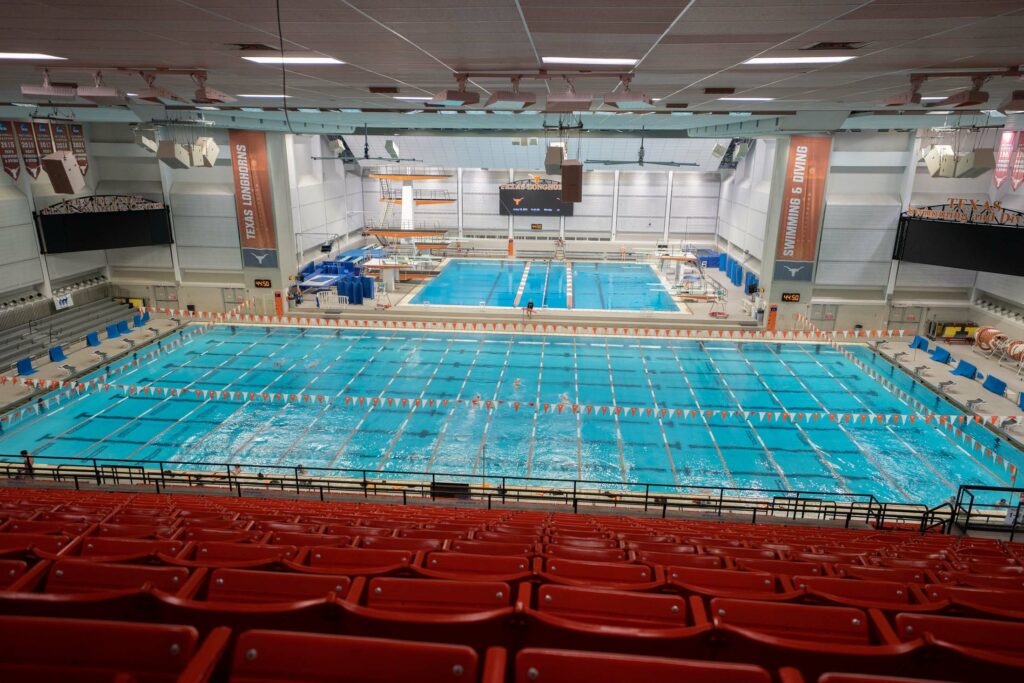
With a separate pool and diving area, the area is laid out in such a way that divers and swimmers can feel together while still having their personalized areas. Local diver for UT, Jordan Skilken, says this layout is unique.
“Most schools you see the diving well and the swimming well in a vertical line,” Skilken says. “It’s really cool that (the TSC’s) swimming well is in its own, separate area from the diving well.”
After an expensive renovation in 2001, the TSC now offers moveable bulkheads to change the length of the lanes, underwater windows, a high-tech sound booth with speakers installed around the facility, and more.
Swimming Wells
First things first, effective swimming wells are important because, well, they’re where you swim! Local swimmer for UT, Kelly Pash, says swimmers notice if a swimming facility is meet-ready from the moment they walk in.
“Some pools will change lanes around,” Pash says. “Swimmers may prefer double-lane lines, and that may need to be adjusted.”
Some facilities contain multiple pools but, at TSC, moveable bulkheads allow for a change of lane size, going from 50 meters to 25 meters or a 25-yard short course. Though unnecessary, it’s also nice to have room on the deck for teams to gather, cheer on their teammates or have room for land warm-ups without much foot traffic.
Pash also looks for good air quality and temperature when it comes to swimming facilities.
“When you get out of the water and it’s really cold, it can affect your next race,” Pash says.
When it comes to air quality, Pash says having well-circulated air is key. Without good circulation, chlorine can stay in the air longer, especially in an indoor facility, and cause chlorine cough.
The other key aspect is lighting, Pash says. If a pool isn’t well-lit, it can make swimming more challenging because the lanes are harder to keep track of. Good lighting, though a small aspect, can make or break a swimmer’s stride.
Diving Wells
Not only are swimming wells important but diving wells are important, too.
With four one-meter and six three-meter springboards, the TSC’s diving well features a diving tower with five separate platform heights. But for Skilken, the appearance of the swimming center was an important factor in her decision to attend UT.
“(TSC) was so bright and clean,” Skilken says. “It was the first thing that stood out to me.”
When she visits other facilities, Skilken also checks out the boards and towers for diving to make sure they’re appropriate for the sport.
“You don’t want (the boards) to be slippery,” Skilken says. “They’re (supposed to be) kept very nice, never peeling (and) you feel safe whenever you’re on them.”
Additionally, while many facilities have concrete platforms, TSC’s are made of wood, which is a more forgiving surface and a little easier on joints. Skilken especially appreciates the fact that the diving and swimming areas are both separate but connected as it provides a great atmosphere with an event always going on. She also loves the lighting in the facility, which makes the diving area feel like a stage.
When it comes to swimming or diving, the facility is ultimately built for the athletes and at UT, theirs is built for them. With spotlights, even temperatures and separate but connected areas, swimmers and divers can race their best and feel celebrated.






